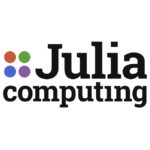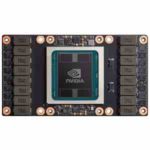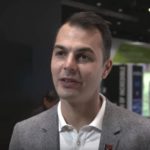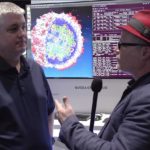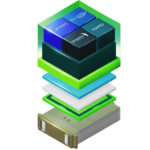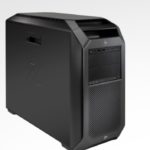Suddenly, GPU cloud provider CoreWeave is one of the hot tech companies of the week and likely longer. No sooner did the Roseland, NY, startup announce on Wednesday it had secured $200 million in a series B venture round extension than the news broke the next day that CoreWeave has signed a deal with Microsoft […]
Julia Computing and GPU Acceleration
Julia is already well regarded for programming multicore CPUs and large parallel computing systems, but recent developments make the language suited for GPU computing as well. The performance possibilities of GPUs can be democratized by providing more high-level tools that are easy to use by a large community of applied mathematicians and machine learning programmers.
NVIDIA Announces GPU-Accelerated Supercomputer on Azure
At SC19, NVIDIA announced the availability of a new kind of GPU-accelerated supercomputer in the cloud on Microsoft Azure. “Built to handle the most demanding AI and high performance computing applications, the largest deployments of Azure’s new NDv2 instance rank among the world’s fastest supercomputers, offering up to 800 NVIDIA V100 Tensor Core GPUs interconnected on a single Mellanox InfiniBand backend network.”
Simplifying AI, Data Science, and HPC Workloads with NVIDIA GPU Cloud
Adel El Hallak and Philip Rogers from NVIDIA gave this talk at the GPU Technology Conference. “Whether it’s for AI, data science and analytics, or HPC, GPU-Accelerated software can make possible the previously impossible. But it’s well known that these cutting edge software tools are often complex to use, hard to manage, and difficult to deploy. We’ll explain how NGC solves these problems and gives users a head start on their projects by simplifying the use of GPU-Optimized software.”
Video: HPC Containers – Democratizing HPC
In this video from SC18 in Dallas, CJ Newburn from NVIDIA describes how developers can quickly containerize their applications and how users can benefit from running their workloads with containers from the NVIDIA GPU Cloud. “A container essentially creates a self contained environment. Your application lives in that container along with everything the application depends on, so the whole bundle is self contained.”
NVIDIA Simplifies Building Containers for HPC Applications
In this video, CJ Newburn from NVIDIA describes how users can benefit from running their workloads in the NVIDIA GPU Cloud. “A container essentially creates a self contained environment. Your application lives in that container along with everything the application depends on, so the whole bundle is self contained. NVIDIA is now offering a script as part of an open source project called HPC Container Maker, or HPCCM that makes it easy for developers to select the ingredients they want to go into a container, to provide those ingredients in an optimized way using best-known recipes.”
Why Use Containers for HPC on the NVIDIA GPU Cloud?
“Containers just make life easy. So one of the things that people have issues with running bare metal is from time to time their libraries change, maybe they want to try the new version of CUDA, the new version of cuDNN, and they forget to simlink it back to the original path. If you have packaged your app into a container, it’s the same every time.”
Why UIUC Built HPC Application Containers for NVIDIA GPU Cloud
In this video from the GPU Technology Conference, John Stone from the University of Illinois describes how container technology in the NVIDIA GPU Cloud help the University distribute accelerated applications for science and engineering. “Containers are a way of packaging up an application and all of its dependencies in such a way that you can install them collectively on a cloud instance or a workstation or a compute node. And it doesn’t require the typical amount of system administration skills and involvement to put one of these containers on a machine.”
New HP Z8 is “World’s Most Powerful Workstation for Machine Learning Development”
HP Z Workstations, with new NVIDIA technology, are ideal for local processing at the edge of the network – giving developers more control, better performance and added security over cloud-based solutions. “Products like the HP Z8, the most powerful workstation for ML development, coupled with the new NVIDIA Quadro GV100, the HP ML Developer Portal and our expanded services offerings will undoubtedly fast-track the adoption of machine learning.”


